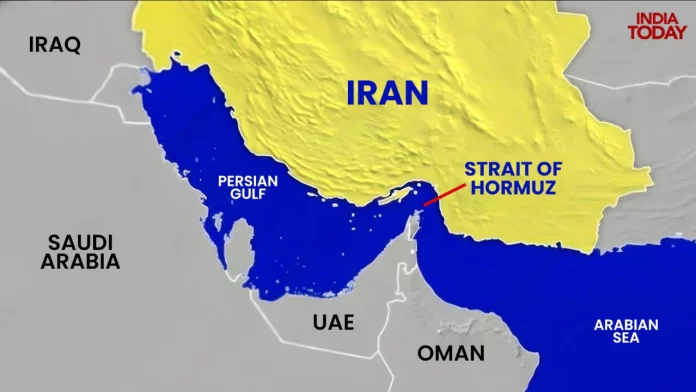
Iran’s parliament has voted to close the Strait of Hormuz, a critical maritime chokepoint through which roughly 20% of the world’s daily oil passes—raising the specter of global economic disruption.
If enacted, the move could halt over $1 billion in oil shipments per day and send global oil prices soaring. On Sunday, Brent crude rose 3.9% to $80 per barrel, while U.S. crude climbed 4.3% to $77.
The closure, framed as a retaliatory escalation following U.S. airstrikes on Iranian nuclear facilities, awaits a final decision from Iran’s Supreme National Security Council, which is expected imminently, according to state-run Press TV.
“This escalation will proceed whenever necessary,” said Islamic Revolutionary Guard Corps (IRGC) commander Esmail Kosari on Sunday.
The narrow Strait of Hormuz, just 20 miles wide at its tightest point and with shipping lanes less than two miles wide in each direction, is one of the world’s most strategically vulnerable waterways. The strait connects the Persian Gulf to the Gulf of Oman and serves as the main export route for the oil-rich Gulf states—including Iran, Iraq, Kuwait, Qatar, Saudi Arabia, and the UAE.
According to military analysts, Iran would likely not attempt a full naval blockade but rather a multi-layered, asymmetric approach.
“Iran’s most immediate disruptive tool would be naval mines,” said Gregg Roman, executive director of the Middle East Forum. “They’d likely pair that with anti-ship missiles launched from mobile coastal batteries—such as their Ghader and Nasir systems—capable of striking vessels up to 185 miles away.”
The United States Navy’s Fifth Fleet, along with allied naval forces, continues to patrol the region and is expected to respond forcefully to any disruption. Iran has no legal right to block international sea lanes, and any such attempt would violate international maritime law.
Iran’s own economy also depends heavily on the Strait of Hormuz, not just for exporting oil but for importing essential goods. Analysts believe a closure would be economically self-defeating.
“Such a move would be temporary and ultimately self-destructive,” Roman said. “Iran relies on the strait for its own vital imports and understands this would provoke a massive U.S. military response.”
He added that Tehran is more likely to use the threat as diplomatic leverage than follow through, noting that alienating China—the largest buyer of Iranian oil—would be “economic suicide.”
The decision comes after U.S. forces dropped six GBU-57 “bunker buster” bombs on Iran’s Fordow nuclear facility and two other sites as part of Operation Midnight Hammer, following an earlier Israeli campaign targeting Iran’s nuclear infrastructure.
Iranian Foreign Minister Abbas Araghchi called the U.S. attacks “lawless and criminal,” warning of “everlasting consequences.”
The potential closure of Hormuz has alarmed global markets and governments, particularly in Asia. Countries like China, India, Japan, and South Korea—heavily reliant on oil shipments through the strait—are likely to face the most immediate consequences.
Iran has disrupted shipping in the Persian Gulf before. In April 2023, the IRGC seized a U.S.-bound tanker and detained a vessel linked to Israel, citing alleged maritime violations. But a full-scale closure would mark an unprecedented escalation with global ramifications.
US President Donald Trump, in a Sunday address, hailed the damage done to Iran’s nuclear sites as “monumental,” citing satellite images of obliterated mountain bunkers and reiterating that the operation had struck “bullseye” targets deep underground.
As tensions continue to rise, Western allies and Gulf states are on high alert, bracing for further instability in a region already on the brink.



